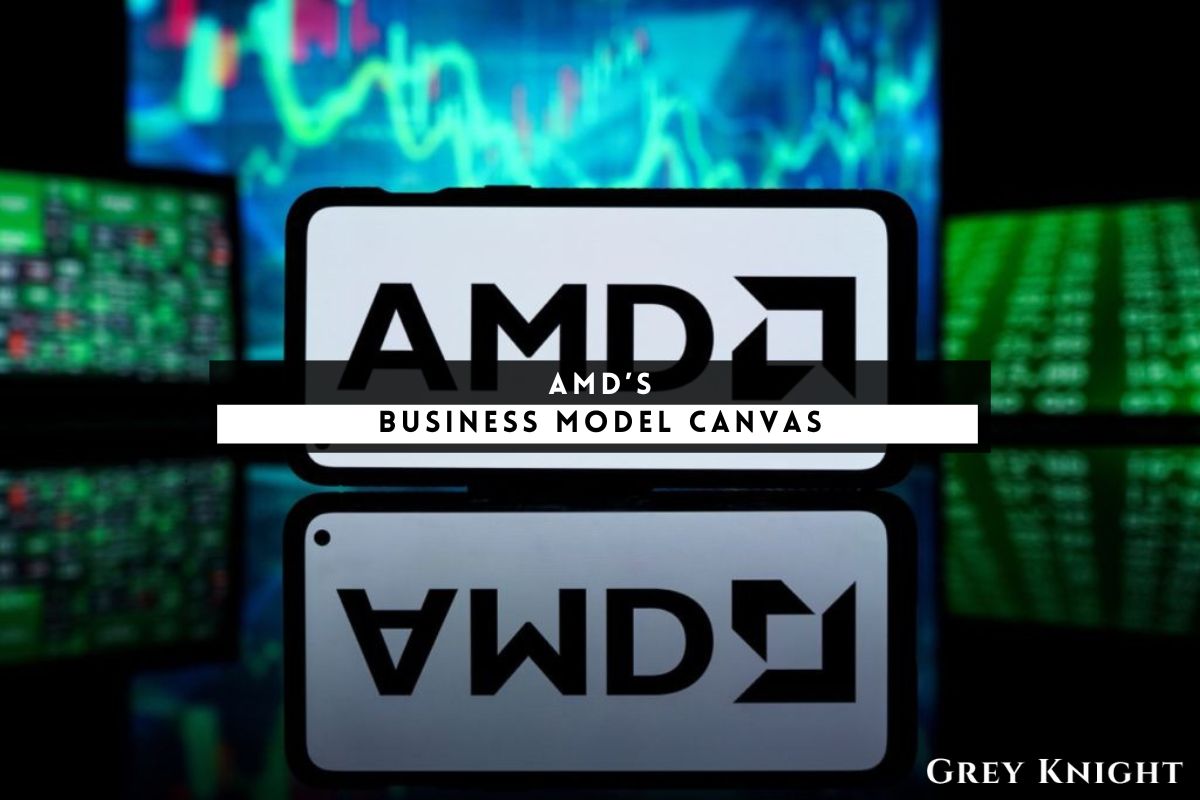Table of Contents
ToggleA Brief History of AMD
Advanced Micro Devices, Inc. (AMD) was founded in 1969 by Jerry Sanders and seven co-founders. The company started as a manufacturer of semiconductors and focused on producing logic chips and RAM for the early computer industry.
In the 1980s, AMD began to shift its focus to the production of microprocessors, which became its main area of expertise. The company’s first major success came with the release of the Am386 processor in 1991, which allowed AMD to compete with Intel in the PC processor market.
Throughout the 2000s, AMD continued to develop innovative processor technology and expanded its product line to include graphics processors and other computing components. The company also acquired several other tech firms, including ATI Technologies, which allowed AMD to enter the graphics processing market.
In recent years, AMD has made significant strides in the semiconductor industry, challenging Intel’s dominance with the release of its Ryzen line of processors, which have gained popularity for their competitive performance and value. The company has also made advancements in the graphics processing industry with its Radeon line of GPUs.
Overall, AMD has established itself as a major player in the semiconductor industry, and continues to push the boundaries of computing technology.
Who Owns AMD?
Advanced Micro Devices, Inc. is owned by a wide range of individual and institutional investors. The top 10 shareholders of AMD as of the latest available data are as follows:
1. The Vanguard Group, Inc. – 8.19%
2. BlackRock, Inc. – 7.63%
3. Fidelity Management & Research Company LLC – 4.77%
4. T. Rowe Price Associates, Inc. – 3.80%
5. State Street Corporation – 3.16%
6. Capital Research & Management Co. (World Investors) – 3.00%
7. Susquehanna Financial Group, LLLP – 2.30%
8. Invesco Ltd. – 1.65%
9. Primecap Management Company – 1.57%
10. Geode Capital Management, LLC – 1.50%
These shareholders consist of a mix of mutual funds, investment firms, and individual investors who collectively own a significant portion of the company.
AMD Mission Statement

The mission of Advanced Micro Devices, Inc. (AMD) is to continually push the boundaries of computing and graphics technology to provide innovative and high-performance solutions that empower people to create, play, and work. AMD is dedicated to delivering cutting-edge products and driving industry innovation through open and collaborative partnerships, while maintaining a commitment to sustainability and corporate responsibility. Through their mission, AMD seeks to enable a future where technology enriches the lives of individuals and enhances the capabilities of businesses worldwide.
How AMD Makes Money?
Advanced Micro Devices, Inc. (AMD) operates on a business model as a multinational semiconductor company that designs and sells microprocessors, graphical processing units, and related technologies for the computer and consumer electronics industries. The company primarily makes money through the sale of its products to original equipment manufacturers (OEMs) and original design manufacturers (ODMs), who then integrate AMD’s components into their own products. Additionally, AMD generates revenue from the licensing of its intellectual property and from the sale of embedded and semi-custom system-on-chip products. Overall, the company’s revenue stream comes from the sale of its high-performance computing and visualization products to a diverse range of customers in the technology sector.
AMD’s Business Model Canvas
The business model canvas is a strategic management framework that allows businesses to visualize, analyze, and design their business model. It consists of nine key elements, each of which represents an essential aspect of the business. These elements include Customer Segments, Value Propositions, Channels, Customer Relationships, Revenue Streams, Key Resources, Key Activities, Key Partners, and Cost Structure.
Customer Segments:
1. Consumer Market: AMD targets individual consumers who are looking to purchase computer processors and graphics cards for personal use.
2. Enterprise Market: The company also caters to businesses and organizations that require high-performance computing solutions.
Value Propositions:
1. High-Performance Computing Products: AMD offers high-quality and high-performance computing products such as CPUs and GPUs.
2. Competitive Pricing: The company aims to provide its customers with competitive prices for its products compared to its competitors.
Channels:
1. Direct Sales: AMD sells its products directly to customers through its website and retail partners.
2. Indirect Sales: The company also distributes its products through third-party retailers and distributors.
Customer Relationships:
1. Customer Support: AMD provides customer support services to assist customers with technical issues and inquiries.
2. Community Engagement: The company engages with its customers through social media, forums, and events to build a strong relationship with them.
Revenue Streams:
1. Product Sales: The primary source of revenue for AMD comes from the sales of its computing products to customers.
2. Licensing Agreements: The company may also generate revenue through licensing its technology to other companies.
Key Resources:
1. Research and Development: AMD invests heavily in research and development to innovate and develop new computing products.
2. Manufacturing Facilities: The company owns and operates manufacturing facilities to produce its products.
Key Activities:
1. Product Development: AMD focuses on developing new and innovative computing products to meet the needs of its customers.
2. Marketing and Sales: The company engages in marketing and sales activities to promote and sell its products to customers.
Key Partners:
1. Suppliers: AMD partners with various suppliers to source components and materials for its products.
2. Technology Partners: The company collaborates with technology partners to develop and optimize its products.
Cost Structure:
1. R&D Expenses: AMD incurs significant expenses in research and development to innovate and develop new products.
2. Manufacturing Costs: The company has costs associated with operating its manufacturing facilities and producing its products.
AMD’s Competitors
Advanced Micro Devices, Inc. (AMD) faces tough competition in the semiconductor industry. Some of its top competitors include Intel Corporation, Nvidia Corporation, Qualcomm Incorporated, Texas Instruments Incorporated, and Broadcom Inc. These companies are also major players in the development and manufacturing of advanced microprocessors, graphics cards, and other semiconductor technologies. AMD must continuously innovate and deliver cutting-edge products to stay competitive in this fast-paced and rapidly evolving market.
AMD SWOT Analysis
Strengths:
1. Strong brand reputation and recognition in the semiconductor industry
2. Diversified product portfolio includes CPUs, GPUs, and semi-custom SoCs
3. Focus on innovation and cutting-edge technology, especially in the gaming and data center markets
4. Strategic partnerships with major tech companies like Microsoft, Sony, and Google
Weaknesses:
1. Dependence on PC and gaming markets for a significant portion of revenue
2. Lower market share compared to main rival Intel in the CPU market
3. Reliance on third-party foundries for manufacturing may impact production and supply chain management
4. Limited presence in the mobile and consumer electronics markets
Opportunities:
1. Growing demand for high-performance computing solutions, especially in data centers and cloud computing
2. Expansion into new markets such as automotive and AI with semi-custom chip designs
3. Potential for increased market share in the CPU market with the launch of competitive products
4. Leveraging partnerships to develop solutions for emerging technologies like VR and AR
Threats:
1. Intense competition from industry leaders like Intel and NVIDIA
2. Global economic uncertainty and market volatility may impact consumer spending on technology
3. Rapid technological advancements and changes in consumer preferences may affect demand for AMD products
4. Impacts of geopolitical tensions and trade restrictions on global supply chain operations
Concluding Analysis
After examining the business model of Advanced Micro Devices, Inc., it is clear to me that the company is well-positioned for future success. With its focus on innovation and its strong partnerships, AMD has been able to carve out a competitive edge in the semiconductor industry. As an analyst, I am optimistic about the potential for continued growth and expansion for AMD in the coming years. The company’s ability to adapt to market trends and deliver cutting-edge products makes it a formidable player in the tech industry. I look forward to seeing how AMD continues to disrupt the market and push the boundaries of what is possible in the world of technology.
Additional Resources
To keep learning and advancing your career, we highly recommend these additional resources:
Business Model Canvas of The Top 1,000 Largest Companies by Market Cap in 2024
A List of 1000 Venture Capital Firms & Investors with LinkedIn Profiles
Peter Thiel and the 16 Unicorns: The Legacy of Thiel Fellowship












